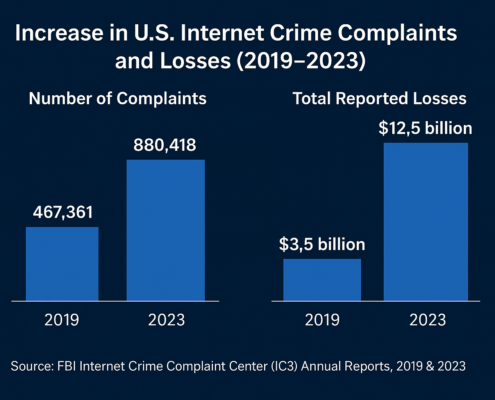Enterprise Networks Transition: IPv4 vs. IPv6 Addresses
While IPv4 and IPv6 are both viable options for enterprise networks, many enterprises, educational institutions and organizations are thinking of migrating from IPv4 to IPv6 addresses, or at lease dual-stacking.
Aside from being the up-to-date standard, the main motivation driving the switch to IPv6 is is depletion of IPv4 addresses. Introduced in the 1980s, IPv4 created a standard that only allocated 4.3 billion addresses. In response to address depletion, IPv6 was introduced as a successor to IPv4 in 1998, and started to get more widely adopted in 2017.
IPv6 solves the limitations of IPv4 with a functionally infinite number of IP addresses, and has a number of advantages such as inefficiency, performance, and security over its 1980s counterpart.
While major web content providers have successfully migrated to IPv6, the adoption has been uneven. Mobile operators, ISPs, and device manufacturers continue to support both standards. The cost of updating network infrastructure has hindered mass IPv6 deployment and adoption. As a result, most organizations still need to support both IPv4 and IPv6.
If you are considering making the transition from IPv4 to v6, there are several methods to help guide through the transition.
The Case for IPv4 Addresses:
Despite being an older format, IPv4 remains the most widely used by organizations. There are several reasons why businesses may choose to stick with IPv4.
Workarounds Allow for Needing Fewer IP Addresses
Carrier Grade Network address translation (CG-NAT) effectively solves the IPv4 address shortage issue, allowing businesses to use private address space internally and only perform CG-NAT at the network edge. This has, to a degree, mitigated some of the the address shortage problem that IPv6 advocates often highlight.
Old Equipment Doesn’t Work With IPv6
Legacy equipment may not be compatible with newer standards, and making the transition to IPv6 can mean adding major equipment expenses.
SysOps Administrators Know IPv4
Network administrators are more familiar and comfortable with the widely used legacy IPv4 standard, and might have reservations when considering whether to migrate from IPv4, which requires a lot of additional training for a smooth transition to IPv6. Additionally, the cost of transitioning to IPv6 may not be justified if the organization does not require improved hardware performance, complex quality of service (QoS) policies, or enhanced network security.
The Case for Migrating to IPv6 Addresses
While IPv4 works for many organizations, IPv6 offers several notable benefits for those considering a migration:
- Efficiency: IPv6 improves routing efficiency by reducing processing overhead on networking gear, alleviating potential bottlenecks for networks with high traffic flows.
- More Configurable: IPv6 headers provide more payload information, allowing for greater classification granularity for organizations with specific requirements.
- Abundant Addresses: IPv6 eliminates the need for CG-NAT at the network edge, as it provides a significantly larger address space capable of accommodating approximately 340 trillion publicly addressable IP addresses.
- Encryption: IPv6 includes built-in IPsec encryption, enhancing network security in comparison to IPv4.
How to Migrate from IPv4 to IPv6
If you are looking to take advantage of the benefits of IPv6, here are some methods to consider to make the transition easier:
Dual-Stack Network
Most modern enterprise network equipment supports dual-stack mode, allowing communication with both IPv6 and IPv4 components and endpoints. Maintaining both protocols is crucial as the majority of internet-connected devices still rely on IPv4.
IPv6 Tunneling
IPv6 tunneling enables the transportation of IPv6 packets across an encrypted tunnel. This method addresses the connectivity issue for network devices lacking IPv6 support and serves as a transition strategy while gradually replacing aging IPv4-only equipment.
NAT Protocol Translation (NAT-PT)
NAT-PT converts IPv4 addresses to IPv6 and vice versa, similar to how standard NAT translates non-internet routable IPv4 addresses. Setting up NAT-PT gateways allows for a smooth transition while aging hardware and endpoints transition to IPv6 over time.
Creating an IPv6 Network from Scratch:
For organizations that prefer to start fresh with an IPv6 network, waiting for the next network hardware refresh cycle provides an opportunity to build a new network without the need for dual stacks or tunnels. This eliminates the reliance on translation methodologies and simplifies the transition process.
Other Popular Blog Posts
Discover more from Brander Group
Subscribe to get the latest posts sent to your email.



